Welcome to the ultimate guide on creating an efficient lighting setup for workshops. Whether you are a professional tradesperson or a DIY enthusiast, proper lighting in your garage workshop is essential for productivity, safety, and overall comfort. As an expert in garage workshop lighting and electrical setup, I’m here to share valuable insights and tips on optimizing your workspace.
Adequate lighting in a workshop is more than just illuminating the space; it can enhance your focus, reduce eye strain, and improve the quality of your work. A well-lit workshop boosts productivity and creates a conducive environment for creativity and precision. By strategically planning your lighting setup, you can transform your garage into a well-lit haven for all your projects.
From choosing the right fixtures and bulbs to positioning lights for maximum coverage, every aspect of your workshop lighting plays a crucial role in creating a functional workspace. Whether setting up task lighting for detailed work or ambient lighting for overall brightness, understanding the different types of lighting and their benefits is critical to a successful workshop setup.
Join me on this enlightening journey as we delve into workshop lighting and electrical setup. Let’s illuminate your workspace and take your garage workshop to the next level of efficiency and functionality. Get ready to brighten up your projects and enhance your work experience with the power of optimal lighting!
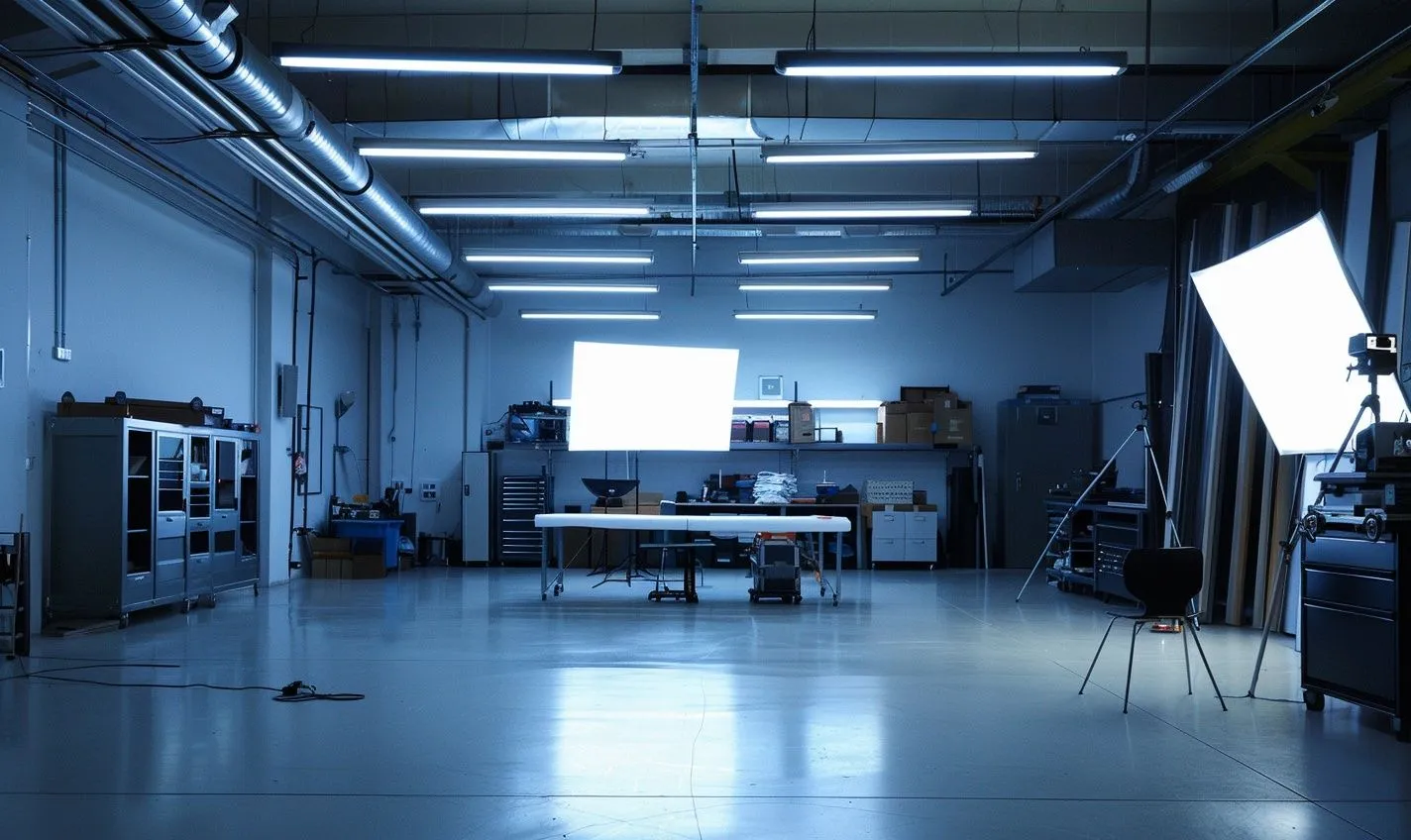
Assessing Your Workshop Lighting Needs
Creating an efficient lighting setup for your garage workshop is crucial for productivity and safety. But how do you know what your workshop’s lighting needs are? You can ensure you have the right lighting solution by asking yourself key questions and considering your workspace’s specific requirements.
Is Your Current Lighting Sufficient?
Take a moment to evaluate your current lighting setup. Does it provide ample illumination for all areas of your workshop? Are any dark corners or areas where shadows are cast, making it difficult to work effectively?
What Activities Do You Perform in Your Workshop?
Consider the type of tasks you typically complete in your workshop. From intricate detailing to heavy machinery work, each activity requires a different lighting level to be performed accurately and safely.
Are There Any Safety Concerns?
Think about any safety hazards that poor lighting could pose in your workshop. Inadequate lighting may lead to tripping hazards, eye strain, or accidents when using tools or machinery. Ensuring proper illumination is essential for a safe working environment.
Do You Require Specialized Lighting?
You may need specialized lighting fixtures if your workshop has specific areas dedicated to certain tasks, such as a workbench for detailed projects or a storage area. Task lighting or adjustable lighting options could enhance visibility for these specific areas.
Assessing your workshop’s lighting needs is the first step in creating an efficient and effective lighting setup. By understanding your activities, identifying safety concerns, and considering specialized lighting requirements, you can tailor your lighting solution to meet your workshop’s unique demands.

The Importance of Proper Illumination in Workshops
When setting up your garage workshop, don’t overlook the crucial aspect of lighting. Creating an efficient lighting setup is the key to a productive and safe working environment. Let’s delve into why proper illumination is so essential.
Enhanced Visibility, Improved Productivity
Imagine working on intricate projects in a dimly lit space – frustrating and dangerous. Adequate workshop lighting enhances visibility, allowing you to focus better on the task and work more efficiently.
Safety First
Poor lighting can lead to accidents and injuries in the workshop. Well-lit work areas help you identify potential hazards, use tools safely, and navigate the space without the risk of tripping or bumping into objects.
Mood and Morale Boost
Good lighting doesn’t just illuminate your workspace; it also affects your mood and overall well-being. Properly lit workshops can create a more positive and energetic atmosphere, boosting your motivation and enthusiasm for projects.
Moreover, natural light has been shown to enhance mood and productivity. Consider maximizing natural light sources in your workshop through windows or skylights.
Efficiency and Energy Savings
Using energy-efficient lighting solutions benefits the environment and your wallet. LED lights, for example, consume less power and have a longer lifespan, reducing your workshop’s energy consumption and maintenance costs.
By incorporating intelligent lighting controls and timers, you can further optimize energy usage in your workshop, ensuring lights are only on when needed.
Remember, proper illumination is the foundation of a well-functioning workshop. Investing in adequate lighting improves visibility and sets the stage for enhanced productivity, safety, and overall enjoyment of your workspace.
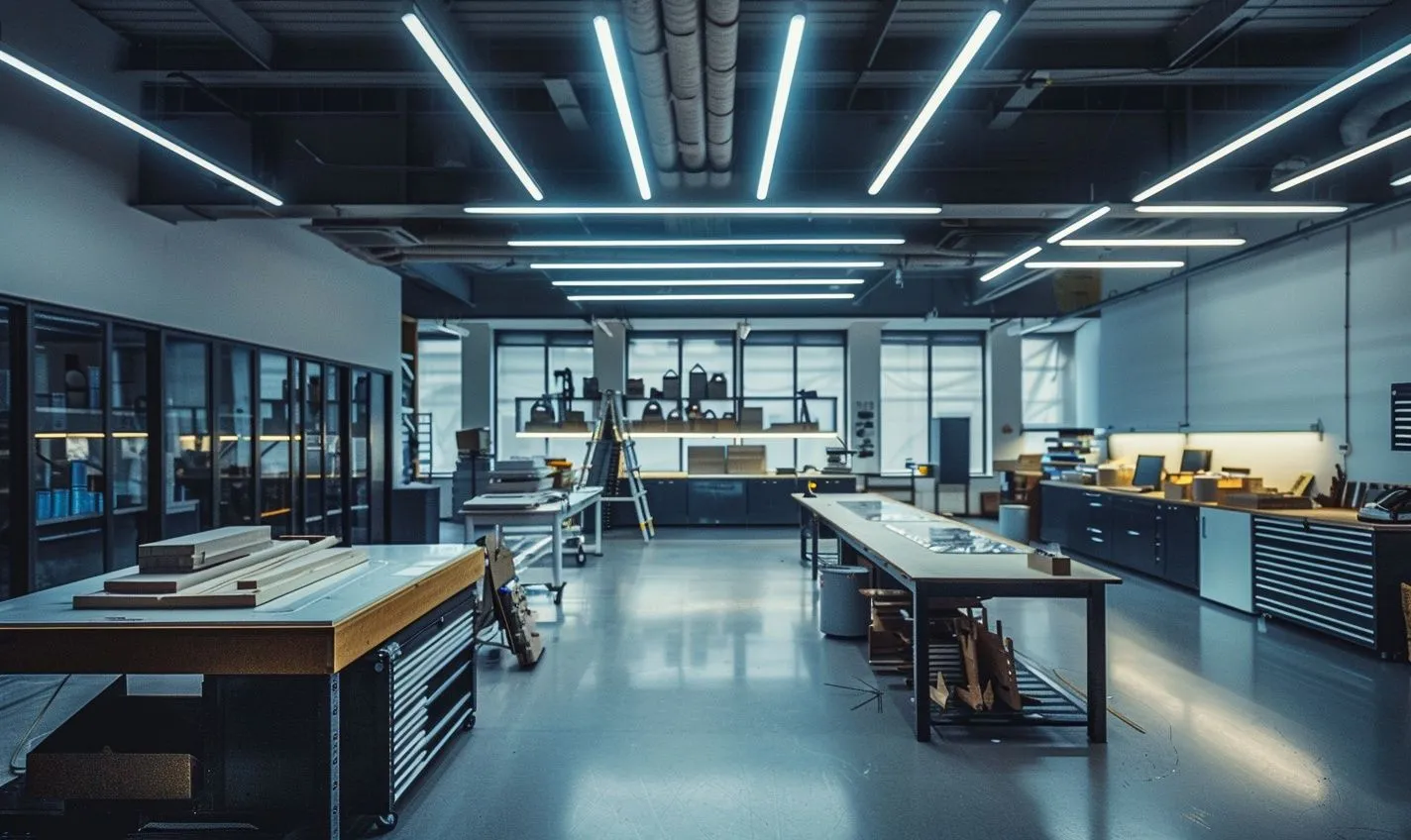
Choosing the Right Lighting Fixtures
Selecting the right fixtures is critical when setting up an efficient lighting system for your garage workshop. These elements illuminate your workspace and impact your productivity and comfort while working on various projects. Here are some factors to consider:
Evaluating Brightness Levels
Do you need intense illumination for detailed tasks or softer light for general use?
– LED lights offer bright, energy-efficient lighting
– Fluorescent tubes provide balanced brightness at lower costs
Considering Light Color Temperature
Are you looking for warm, cozy lighting or astonishing, invigorating brightness?
– Warm white lights create a comfortable atmosphere
– Cool white lights mimic daylight for enhanced focus
Assessing Durability and Longevity
Do you want durable fixtures that require minimal maintenance?
– LED lights have a long lifespan and are shock-resistant
– Metal halide lamps offer high-intensity lighting with longevity
Exploring Smart Lighting Options
Want to have control over brightness levels and energy consumption?
– Smart LED bulbs can be adjusted remotely with a smartphone app
– Motion sensor lights save energy by turning on only when needed
Ultimately, the right lighting fixtures for your garage workshop should align with your needs and preferences. By carefully considering factors like brightness, color temperature, durability, and intelligent features, you can create a well-lit and inviting workspace that enhances your efficiency and enjoyment of DIY projects. So, why settle for dim and inadequate lighting when you can brighten up your workshop and boost your productivity?
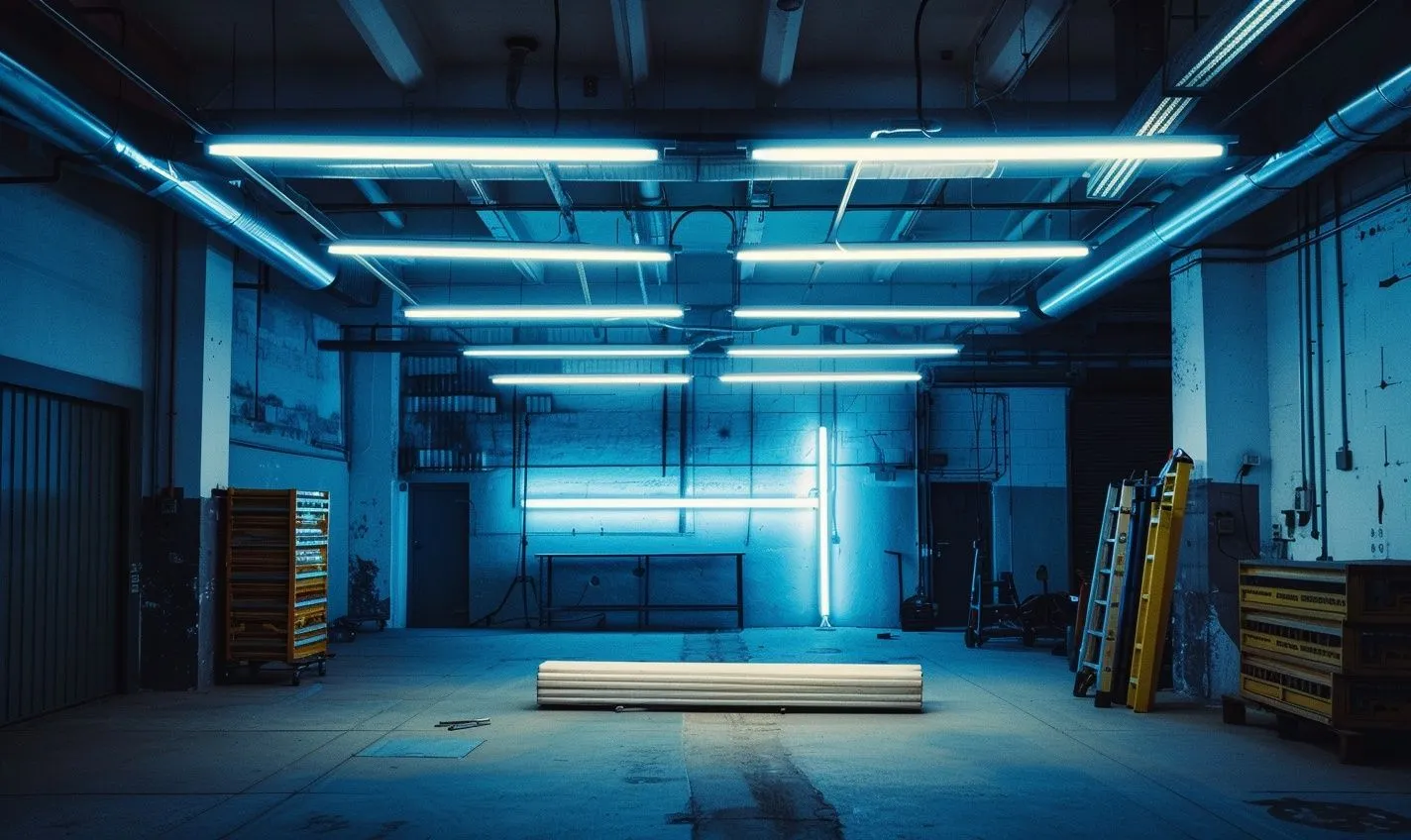
Understanding Light Placement for Maximum Efficiency
When it comes to setting up your workshop lighting, how you position your lights can make a significant impact on your overall efficiency and productivity. Proper light placement helps you see better, reduces eye strain, and enhances focus. Here are some critical strategies for maximizing the efficiency of your workshop lighting:
Consider Your Work Areas
Before installing your lights, assess the different work zones in your workshop. Each area may require varying levels of brightness depending on the tasks performed. For instance, overhead lighting may be ideal for general tasks, while task lighting is better for detailed work.
Avoid Glare and Shadows
Position your lights in a way that minimizes glare and shadows. Glare can cause eye fatigue, while shadows can make it challenging to see details. Adjustable task lights and indirect lighting fixtures can help reduce these issues.
Use a Combination of Lighting Fixtures
A practical workshop lighting setup often incorporates a blend of overhead lights, task lights, and natural light. You can create a well-balanced, versatile environment that suits various activities by combining lighting sources.
Install Lighting Controls
Consider installing dimmer switches or motion sensors to gain more control over the brightness levels in your workshop. This will allow you to adjust the lighting according to your needs and save energy when certain areas are unused.
Regularly Maintain Your Lighting Setup
Keep your workshop lights clean and routinely inspect them for any issues. Dust and dirt buildup can reduce the brightness of your lights, while faulty fixtures may lead to uneven lighting. Regular maintenance ensures your lights are functioning optimally.
By paying attention to the positioning of your lights and utilizing a combination of lighting fixtures, you can create a workspace that is well-lit, comfortable, and conducive to productivity. Understanding the impact of light placement is crucial in enhancing your workshop experience and achieving optimal project results.
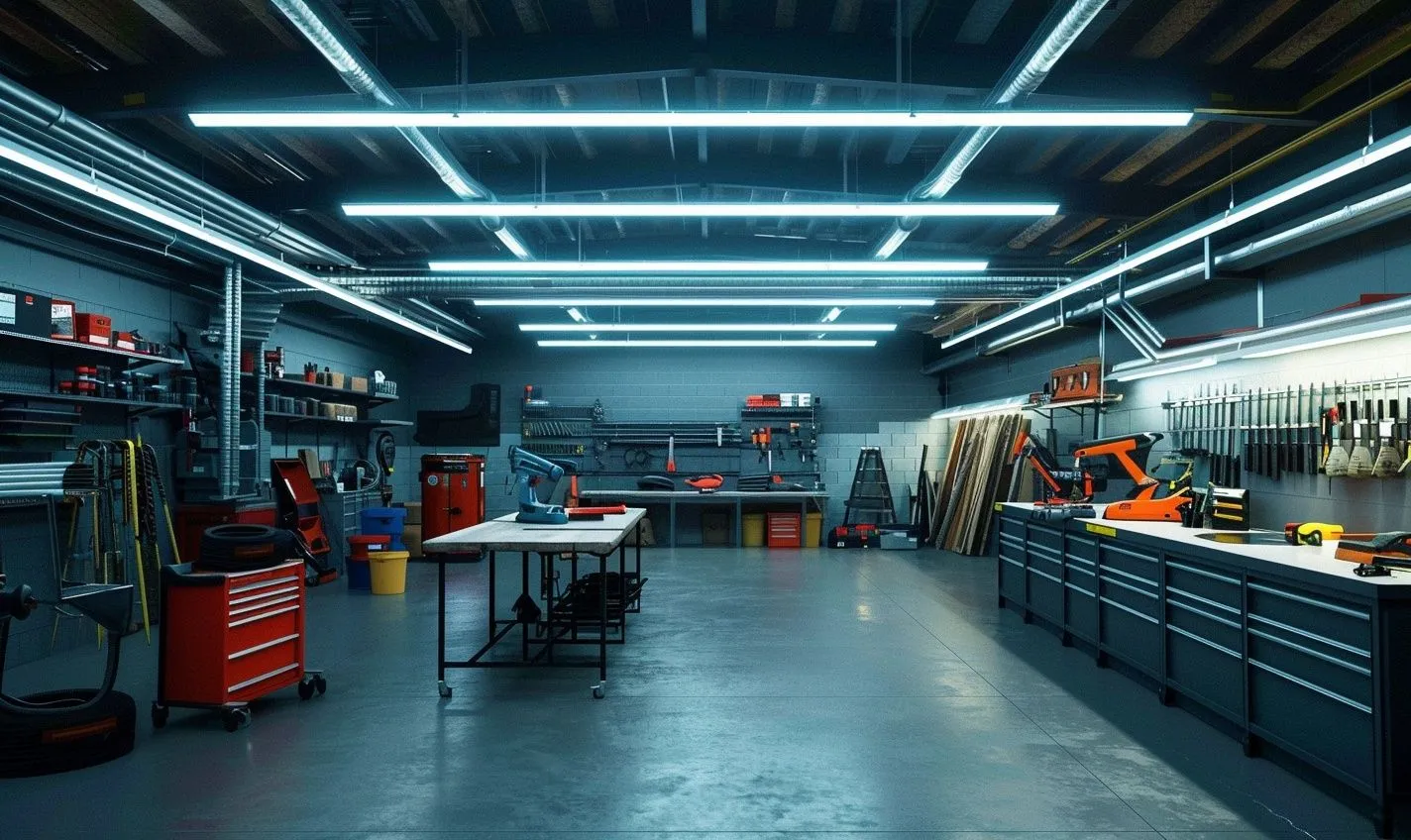
Exploring Different Types of Workshop Lighting
When setting up your garage workshop lighting and electrical system, it’s crucial to consider the different types of lighting options available. Each type of lighting enhances visibility and ensures a safe working environment.
Fluorescent Lighting
Fluorescent lighting is popular in workshops due to its energy efficiency and bright illumination. It provides even lighting across the workspace, reducing shadows and eye strain.
LED Lighting
LED lighting is known for its longevity and energy efficiency. It produces a white, bright light that resembles natural daylight, making it ideal for detailed tasks and intricate work.
Halogen Lighting
Halogen lighting produces an intense, focused beam of light, perfect for spotlighting specific areas in your workshop. However, they can generate heat and may not be as energy-efficient as other options.
Each type of lighting has advantages and drawbacks, so consider your workshop needs and tasks to determine the most suitable option for your setup.
Combining Lighting Types
For optimal workshop illumination, you can combine different types of lighting to create a well-rounded lighting setup. By strategically placing various light sources, you can minimize shadows, reduce glare, and enhance overall visibility in your workspace.
- Use overhead fluorescent lighting for general illumination.
- Install task lighting fixtures like LEDs for focused, detailed work.
- Supplement natural light sources through windows or skylights for a more refreshing atmosphere.
Combining these lighting types creates a dynamic and multifunctional environment that caters to different tasks and enhances overall productivity.
Summary and Considerations
As you explore the different workshop lighting options, remember to assess your specific needs, consider the work you’ll be doing, and prioritize energy efficiency and safety in your setup. A well-thought-out lighting plan can transform your garage workshop into a well-lit, productive space where you can tackle projects with ease and precision.
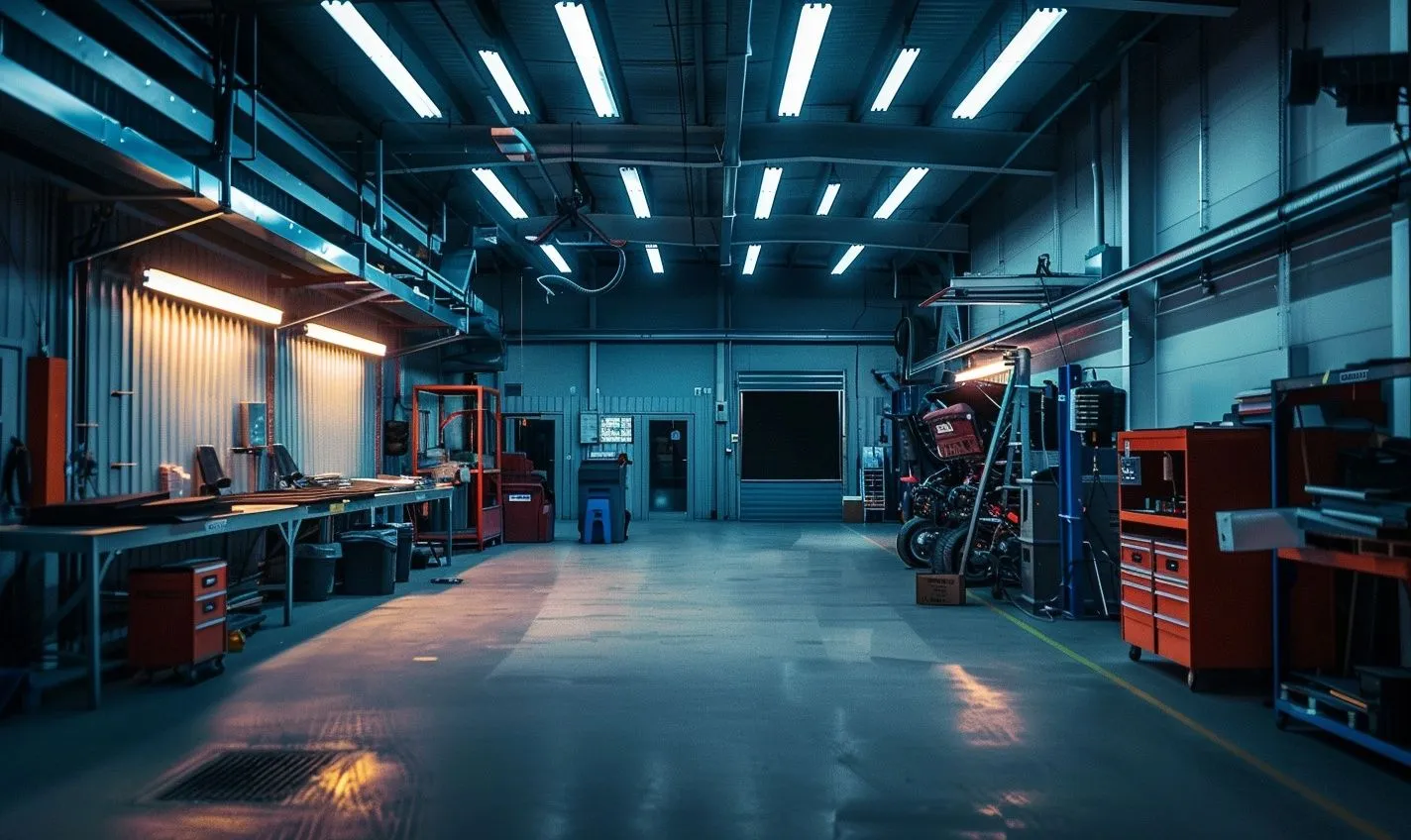
Enhancing Visibility with Task Lighting
When setting up your garage workshop lighting, task lighting is crucial in enhancing visibility and ensuring you can work efficiently and safely. Task lighting is like a trusty sidekick; it swoops in to illuminate shadowy corners and helps you focus on your work.
Why Task Lighting Matters:
Task lighting is the unsung hero of your workshop lighting setup. It provides targeted brightness exactly where you need it most. Without it, you might strain your eyes or miss crucial project details.
Finding the Right Balance:
Task lighting should complement your overall lighting scheme without overpowering it. It should be adjustable and easily positioned to direct the light precisely where needed, like a spotlight on a stage highlighting the star performer.
Types of Task Lighting to Consider:
- Adjustable LED desk lamps
- Clamp-on lights for workbenches
- Under-cabinet LED strips
These options offer flexibility and versatility. They ensure your workspace is well-lit from all angles and corners, leaving no room for shadows to hide and no detail to go unnoticed.
Benefits of Task Lighting:
- Enhances visibility for intricate tasks
- Reduces eye strain and fatigue
- Improves overall work quality and accuracy
Imagine task lighting as your spotlight, highlighting your craftsmanship and guiding you through your projects precisely and efficiently. It’s the secret weapon in your workshop that ensures every detail is illuminated, every cut is precise, and every project is a masterpiece.
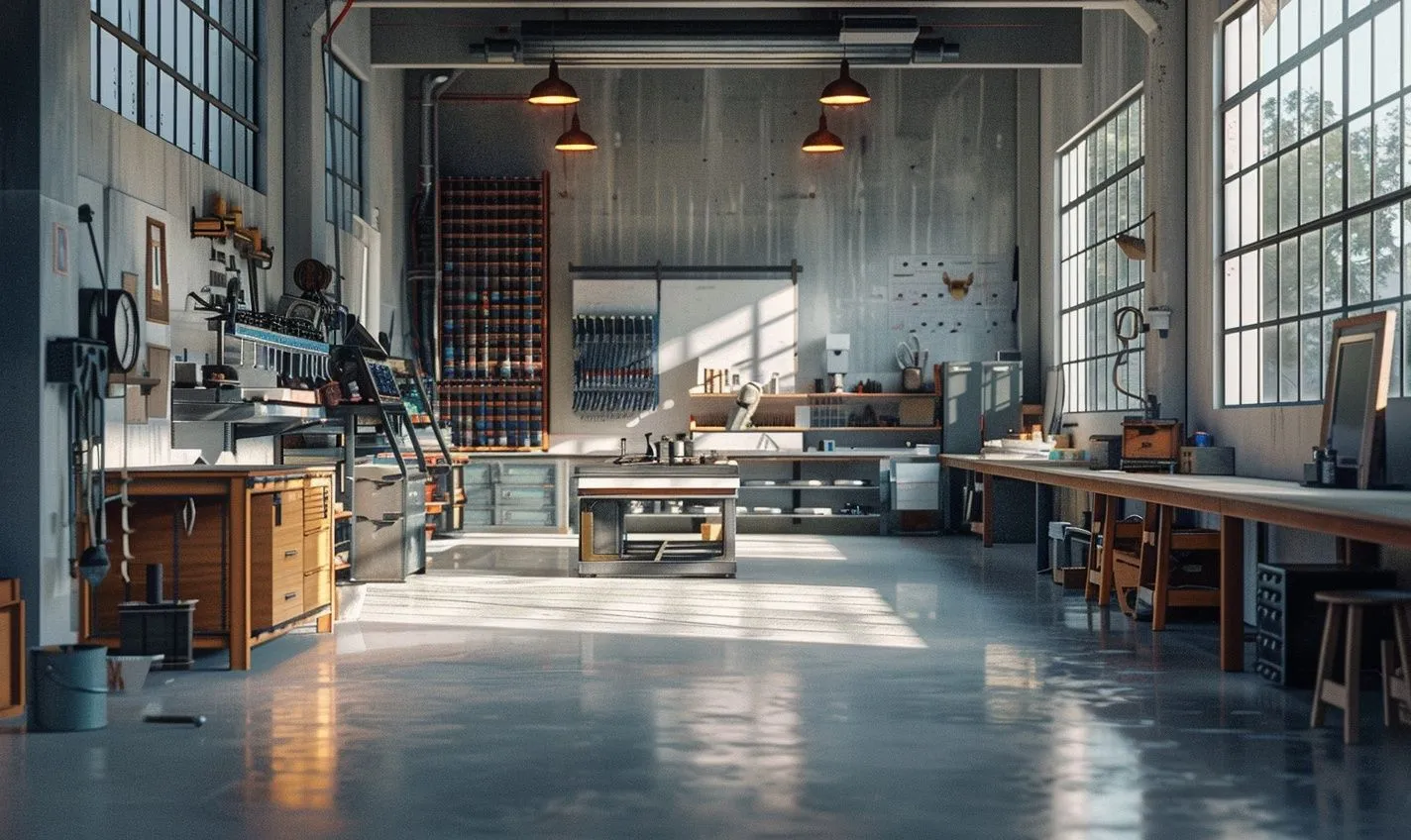
Creating a Well-Lit and Safe Working Environment
When you step into your garage workshop, you want it to inspire productivity and creativity. The proper lighting setup can affect how you feel and work in your space. Let’s explore how to create a well-lit and safe working environment that meets your needs and boosts efficiency.
Assessing Your Workshop Lighting Needs
Start by evaluating the current lighting situation in your workshop. Are there any dark corners or areas that lack proper illumination? Consider the tasks you usually perform in each section of your workshop to determine the optimal lighting requirements.
The Importance of Proper Illumination in Workshops
Good lighting brightens your workspace and improves safety, but insufficient lighting can lead to accidents, eye strain, and overall discomfort. By investing in adequate lighting, you’re investing in your well-being.
Choosing the Right Lighting Fixtures
- LED lights offer energy efficiency and a long lifespan.
- Fluorescent lights are cost-effective for larger areas.
- Task lights provide focused illumination for specific work zones.
Understanding Light Placement for Maximum Efficiency
Strategically position your lighting fixtures to eliminate shadows and glare. Overhead lighting can create overall brightness, while task lighting can enhance visibility for detailed work. Find the balance that suits your workflow best.
Enhancing Visibility with Task Lighting
Intricate tasks require focused lighting. Consider adding adjustable task lights to illuminate your workbench, machinery, or any area that needs extra attention. This targeted approach improves precision and reduces eye strain.
Creating a well-lit and safe working environment is not just about visibility—it’s about creating a space where you feel motivated and secure. Implementing the proper lighting setup tailored to your needs can transform your garage workshop into a hub of productivity and inspiration.
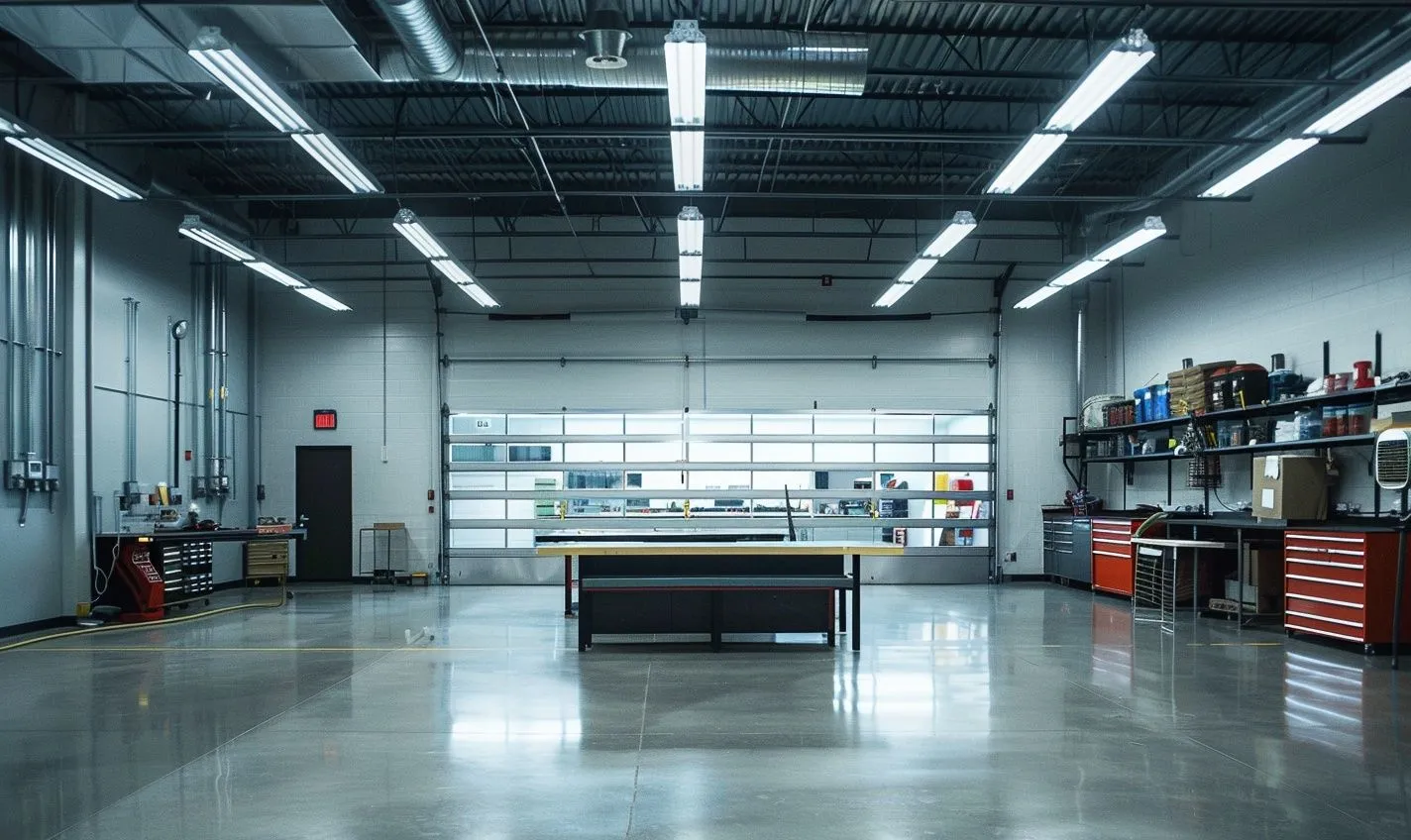
Integrating Natural Light into Your Workshop
Picture this: the soft glow of sunlight streaming through your workshop windows, illuminating every corner, creating a warm and inviting atmosphere. Natural light is not just a design choice but a crucial element in creating an efficient and well-lit workshop.
The Benefits of Natural Light
Adding natural light to your workshop brings a myriad of benefits that go beyond just brightness:
- Boosts mood and productivity
- Reduces eye strain and fatigue
- Enhances the ambiance of the space
Maximizing Natural Light
To make the most of natural light in your workshop, consider the following tips:
- Position workbenches and tables near windows
- Use light-colored walls and ceilings to reflect light
- Install skylights or light tubes for additional sunlight
But what about those cloudy days or late nights when natural light is scarce? That’s where task lighting comes in handy to supplement the sunlight and ensure consistent brightness throughout the day.
Choosing the Right Fixtures
When integrating natural light into your workshop, choose lighting fixtures that complement and enhance the sunlight:
- Opt for daylight-spectrum LED bulbs for a natural light feel
- Use adjustable fixtures to control light intensity
- Consider motion sensor lights for energy efficiency
Remember, the goal is to create a harmonious blend of natural and artificial light that optimizes visibility and comfort in your workspace.
Maintaining a Balanced Lighting Environment
While natural light is beneficial, striking a balance and preventing harsh glare or shadows is essential. Use curtains or blinds to control the amount of sunlight entering your workshop and adjust artificial lighting accordingly.
You can create a well-lit workshop that enhances productivity and enjoyment by thoughtfully integrating natural light and artificial lighting.
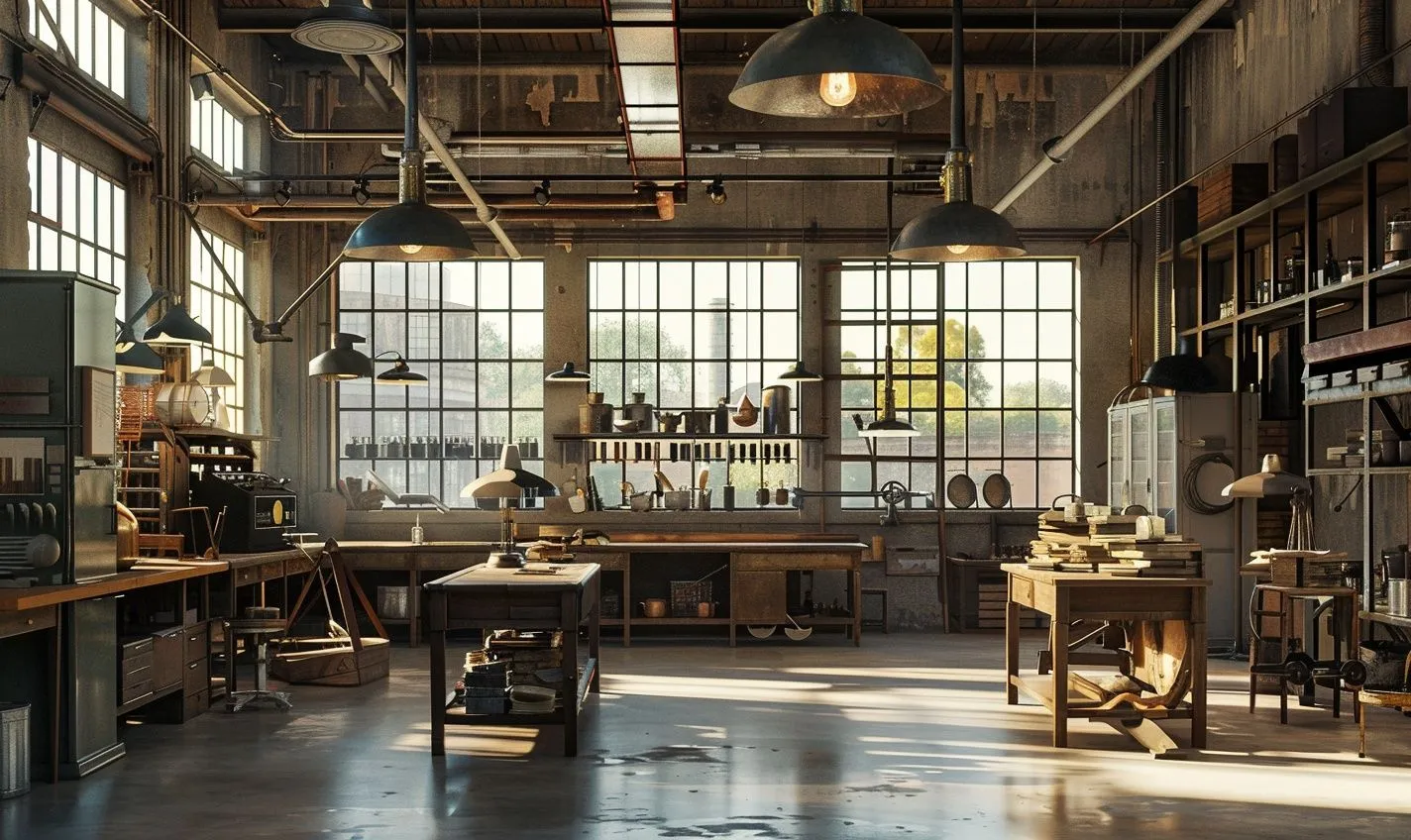
Efficiently Managing Shadows and Glare
When setting up lighting in your garage workshop, one crucial aspect is effectively managing shadows and glare. Shadows can make it challenging to see details, while glare can cause eye strain and discomfort. Let’s explore some tips to optimize your lighting setup for a shadow-free and glare-free workspace.
Positioning Lights Strategically
Placing lights directly above your work area can minimize shadows. Opt for adjustable fixtures to direct light where you need it most. Avoid positioning lights behind you to reduce glare on surfaces.
Utilizing Task Lighting
Task lights, like LED workbench lamps, can provide focused illumination where you’re working. These lights are ideal for intricate tasks that require precision and attention to detail.
Investing in Anti-Glare Lighting
Consider investing in anti-glare light fixtures or diffusers to soften the intensity of light sources. These accessories can help prevent glare and create a more comfortable working environment.
Using Bright, Uniform Lighting
Ensure your workshop is uniformly lit to reduce shadows and create a consistent illumination. Combining overhead lighting with task lighting can help eliminate dark spots and enhance visibility.
Optimizing Natural Light
Position your workbench near windows or skylights to maximize natural light. Natural light reduces the need for artificial lighting and provides a pleasant ambiance for your workspace.
By implementing these strategies, you can create an efficient lighting setup in your garage workshop that minimizes shadows and glare, making working on your projects more accessible and comfortable.
Optimizing Energy Efficiency in Your Workshop Lighting
Are you tired of paying high electricity bills to run your workshop lights all day? Let’s explore ways to make your lighting setup more energy-efficient without compromising brightness or safety.
Upgrading to LED Lighting
- Switching from incandescent to LED bulbs can save you up to 75% on energy costs.
- LED lights last longer, reducing the frequency of replacements and maintenance.
- They produce less heat, keeping your workshop cooler and safer.
Installing Motion Sensors
Why keep the lights on in your workshop when no one is around? Motion sensors can automatically turn off lights when the space is empty, saving you energy and money.
Utilizing Natural Light
Don’t underestimate the power of natural light. Position your workstations near windows or skylights to minimize the need for artificial lighting during the day.
Setting Up Zoning and Task Lighting
Instead of illuminating your entire workshop uniformly, consider creating zones with specific lighting needs—direct light to where you need it most with task lighting, reducing energy consumption.
Investing in Dimmer Switches
- Dimmers allow you to adjust the brightness of your lights based on the task at hand.
- Lowering the light intensity saves energy and creates a more comfortable working environment.
Implementing these energy-efficient lighting strategies will reduce your electricity bills and contribute to a greener planet. So why wait? Start optimizing your workshop lighting setup today!
Conclusion
Creating an efficient lighting setup for workshops is crucial for productivity, safety, and overall functionality. Following the steps outlined in this comprehensive guide, you can transform your garage workshop into a well-lit and conducive space for all your projects.
Remember to assess your workshop’s layout and needs, then plan your lighting scheme accordingly. Incorporate a mix of overhead, task, and ambient lighting to ensure proper illumination throughout the space.
Investing in high-quality lighting fixtures, such as LED lights, will save energy and provide consistent and bright lighting for your workspace. Additionally, consider adding adjustable lighting options to accommodate different tasks and preferences.
Proper electrical setups, such as dedicated circuits and outlets, can ensure your lighting system operates safely and efficiently. To further enhance the functionality of your workshop, consider incorporating lighting controls, such as dimmers and timers.
You can create an optimal lighting setup with the right tools and knowledge to enhance your productivity and overall experience. So, roll up your sleeves, follow these guidelines, and confidently illuminate your workshop!
Frequently Asked Questions (FAQs)
Q: What is the importance of proper lighting in a garage workshop?
A: Proper lighting in a garage workshop is crucial for adequate visibility while working on projects, ensuring safety, and preventing eye strain.
Q: How can I create an efficient lighting setup for my workshop?
A: To create an efficient lighting setup, consider installing LED lights, positioning lights strategically, and utilizing task lighting where needed.
Q: What are the benefits of using LED lights in a garage workshop?
A: LED lights are energy-efficient, long-lasting, produce bright light, and are available in various color temperatures to suit different tasks.
Q: Is it essential to consider color temperature when choosing workshop lighting?
A: Yes, selecting the right color temperature (measured in Kelvin) is vital as it can impact visibility, focus, and overall ambiance in the workshop.
Q: How can I ensure proper electrical setup for my workshop lighting?
A: It’s essential to have a licensed electrician assess your workshop’s electrical capacity, install proper wiring, and use appropriate fixtures to meet safety standards.
Q: Can lighting control options enhance efficiency in a workshop?
A: Yes, incorporating motion sensors, dimmers, and intelligent lighting systems can help optimize energy usage and convenience in a workshop.